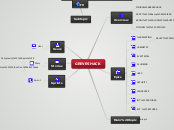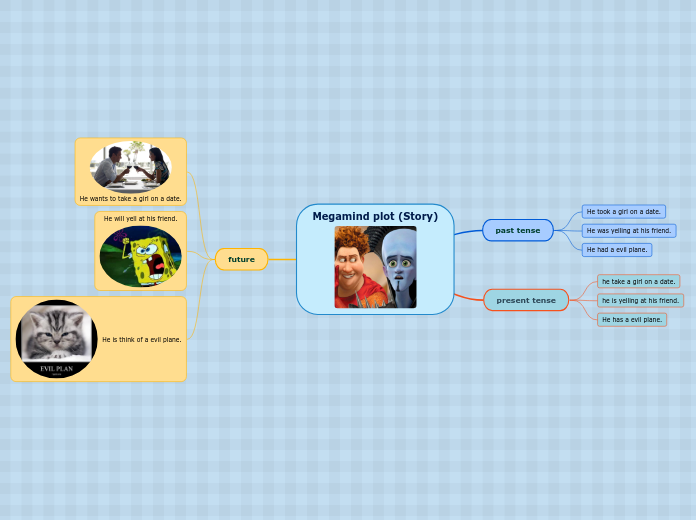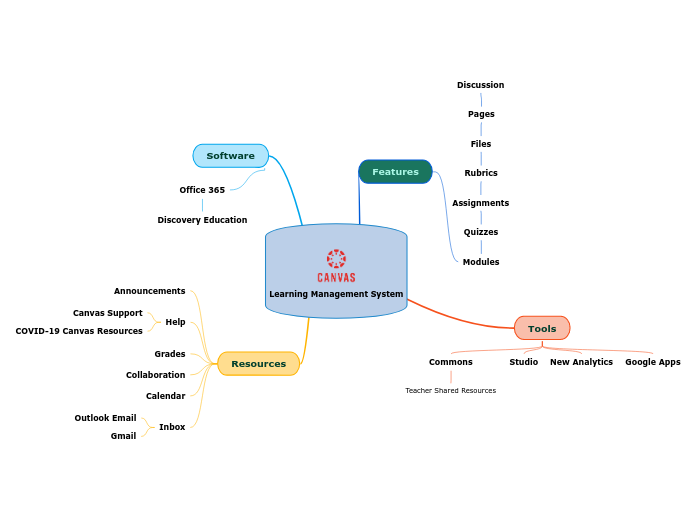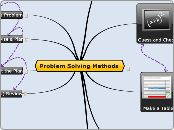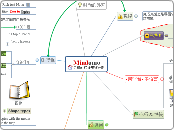Collect on the left
Gather information on the left
On the left side of the map, we will collect and develop information to build a specification.
It will be moved to the right hand side when it is ready to be included in the plan.
Plan on the right
Plan on the right
On the right hand side of the map, we will organise and plan elements of the project. This side of the map reflects what we will actually do.
Ideas are moved from the left side to the right side when they are adequately developed and committed.
FX
Welcome!
This Smart Map helps you to outline the plan for an Agile project. The wizard shows you the basic principles, so that you can then leave the wizard behind and continue to develop the map as a regular Mindomo map.
The purpose of using a Mindomo map is to create a focus for discussion and explanation, which is an important principle of Agile. You can use the map to discuss and explain stories, specifications, features and plans. The map aims to capture an accurate description of the work to be done, but does not manage the project around it.
Continue without the Wizard
Developing an Agile plan will be an interactive and iterative process, and cannot be done in one pass. This Smart Map wizard only aims to demonstrate the basic ideas and help you to understand the layout. Now you can continue to edit and refine your plan in Mindomo, without the wizard. The steps are:
* Click Options and save this map as a regular Mindomo map.
* Delete the information-only floating topics, as you won't need them any more.
* Develop the users, user stories and features & functions until you are happy with them.
* When a story is well enough developed, you can drag it onto a Sprint topic.
* When a Sprint is well defined and is realistic, you can drag it onto an Epic topic on the right hand side of the map.
The right hand side of the map will become your agreed plan, while things that remain on the left are not yet fully defined or committed.
Of course, you can use further Mindomo features to add more information to the map and manage tasks.
Continuing without the Wizard
Developing an Agile plan will be an interactive and iterative process, and cannot be done in one pass. This Smart Map wizard only aims to demonstrate the basic ideas and help you to understand the layout. Now you can continue to edit and refine your plan in Mindomo, without the wizard. The steps are:
- Click Options and save this map as a regular Mindomo map.
- Delete the information-only floating topics, as you won't need them any more.
- Develop the users, user stories and features & functions until you are happy with them.
- When a story is well enough developed, you can drag it onto a Sprint topic.
- When a sprint is well defined and is realistic, you can drag it onto an Epic topic on the right hand side of the map.
- The right hand side of the map will become your agreed plan, while things that remain on the left are not yet fully defined or committed.
- Of course, you can use further Mindomo features to add more information to the map and manage tasks.
GREVESHACK
Add your project name
Begin by typing in the name of your project, then press Enter.
Sprints
Sprints
Sprints are groups of user Stories that fit together well enough to be demonstrated and used. Sprints are defined by timeboxing, and also by what is practical to deliver and use.
When adequately defined, Sprints can be moved to belong to an Epic on the right hand side of the map, and become part of the project plan.
Just add a couple of Sprints using this wizard. You can add more later when editing the map in Mindomo.
Sprint
Add a Sprint
If you can identify Sprint groupings from your stories, add them here. You may have a commitment to divide the project into a minimum number of sprints, or you may already be able to identify groups of functionality that can be demonstrated and delivered.
Stories
Stories
Stories are the heart of an Agile plan. They describe something that can be tested, delivered and actually used by Users.
When adequately defined, Stories can be moved to belong to a Sprint below. A Sprint is a group of Stories that build a working part of a solution.
Just add a couple of user stories here to establish the idea. You can add more later.
Story
Add a user story
Type in a user story, in the following format:
'As a [A], I need to [B], so that I can [C]'
where:
[A] is a user role,
[B] is what the user needs to do, and
[C] is why they need to do it.
Example: 'As a registered user, I need to be able to change my password, so that I can manage security'.
Click on an icon to rank the importance of this Story:
- Essential - must be delivered in the project
- Preferred - should be included if possible
- Optional - include only when all essential and preferred items are complete
Feature, function or task
Add a feature, function or task
What features, functions or tasks will be needed to deliver this story in a working form? What components must be working? What needs to be researched and designed?
Add an item and press Enter. Just add a few to get the idea - you can add more later when editing the map as a Mindomo map.
Complexity (points)
How complex is this story?
Estimate the relative complexity of this story, expressed as story points. Trivial things are only a point or two, and average is about 5 points. If you find it hard to guess, you may need to break it down further into smaller stories.
Make your selection and press Enter.
1 story point (easy)2 story points3 story points5 story points (average)8 story points13 story points (hard)More than 13 story points
Users
Define your users
Next, we will make a list of Users. These are the people who will interact with the solution that you are creating. They will have reasons for wanting to use the solution, and expectations of what it should and should not do. Users are identified not by personal name, but by their role in relation to the task they perform.
For the purposes of this wizard, just enter a couple of user roles to establish the idea. You can add more later.
User
Add a User role
Type in a User role and press Enter. Typical roles for an IT solution might be:
- Unregistered users
- Registered users
- Users with special privileges
- Support staff
- Sales staff
- System administrators
- Hackers
Main topic
Subtopic
Epics
Epics
Epics are the major stages in a project, and are divided up into sprints.
An epic is often a product release point or a handover to the customer.
You will probably already have a good idea of the major milestones in your project. You do not need to fully plan them here and now, as you can modify them later on.
EXT. FEATURES
INT. FEATURES
LANDSCAPE
SECURITY
HVAC
PLUMBING
ELECTRICAL
CABINETRY
[PAINTING
Add an Epic
Add an Epic (major project phase) to the map. If you have a target date in mind, include it in the topic text for clarity.
SELECT PAINTER
Overview
Summarise your project
We will begin with a summary of the key points of your project, to act as a reference for discussions.
MICHAEL, CATO,
KENNY, ALAN, AUSTIN, ERIK
SCOTT & JESS
FINISH GREVESHACK
Add a key point about your project
Add a key point about your project. Consider:
- Who is the customer?
- Who is delivering the project?
- Why is this project needed?
- Who are the users?
- What are the core objectives?
